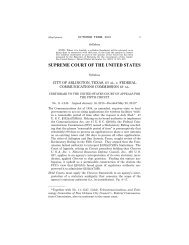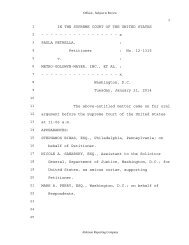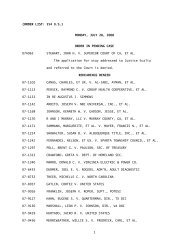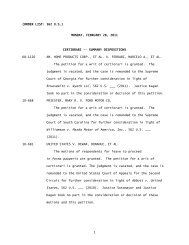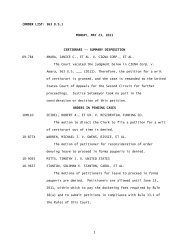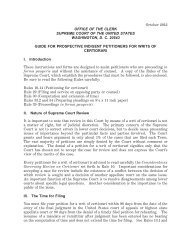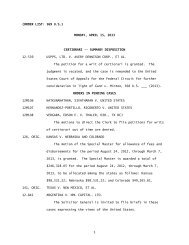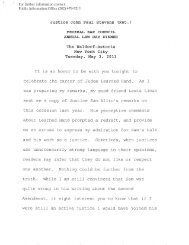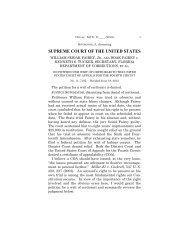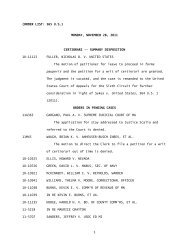12-398 Association for Molecular Pathology v. Myriad Genetics, Inc ...
12-398 Association for Molecular Pathology v. Myriad Genetics, Inc ...
12-398 Association for Molecular Pathology v. Myriad Genetics, Inc ...
You also want an ePaper? Increase the reach of your titles
YUMPU automatically turns print PDFs into web optimized ePapers that Google loves.
4 ASSOCIATION FOR MOLECULAR PATHOLOGY v.<br />
MYRIAD GENETICS, INC.<br />
Opinion of the Court<br />
gether. Large changes, involving the deletion, rearrangement,<br />
or duplication of hundreds or even millions of nucleotides,<br />
can result in the elimination, misplacement, or<br />
duplication of entire genes. Some mutations are harmless,<br />
but others can cause disease or increase the risk of disease.<br />
As a result, the study of genetics can lead to valu-<br />
able medical breakthroughs.<br />
B<br />
This case involves patents filed by <strong>Myriad</strong> after it made<br />
one such medical breakthrough. <strong>Myriad</strong> discovered the<br />
precise location and sequence of what are now known as<br />
the BRCA1 and BRCA2 genes. Mutations in these genes<br />
can dramatically increase an individual’s risk of developing<br />
breast and ovarian cancer. The average American<br />
woman has a <strong>12</strong>- to 13-percent risk of developing breast<br />
cancer, but <strong>for</strong> women with certain genetic mutations, the<br />
risk can range between 50 and 80 percent <strong>for</strong> breast cancer<br />
and between 20 and 50 percent <strong>for</strong> ovarian cancer.<br />
Be<strong>for</strong>e <strong>Myriad</strong>’s discovery of the BRCA1 and BRCA2<br />
genes, scientists knew that heredity played a role in establishing<br />
a woman’s risk of developing breast and ovarian<br />
cancer, but they did not know which genes were associated<br />
with those cancers.<br />
<strong>Myriad</strong> identified the exact location of the BRCA1 and<br />
BRCA2 genes on chromosomes 17 and 13. Chromosome<br />
17 has approximately 80 million nucleotides, and chromosome<br />
13 has approximately 114 million. <strong>Association</strong><br />
<strong>for</strong> <strong>Molecular</strong> <strong>Pathology</strong> v. United States Patent and Trademark<br />
Office, 689 F. 3d 1303, 1328 (CA Fed. 20<strong>12</strong>). Within<br />
those chromosomes, the BRCA1 and BRCA2 genes are<br />
each about 80,000 nucleotides long. If just exons are<br />
counted, the BRCA1 gene is only about 5,500 nucleotides<br />
long; <strong>for</strong> the BRCA2 gene, that number is about 10,200.<br />
Ibid. Knowledge of the location of the BRCA1 and BRCA2<br />
genes allowed <strong>Myriad</strong> to determine their typical nucleotide



